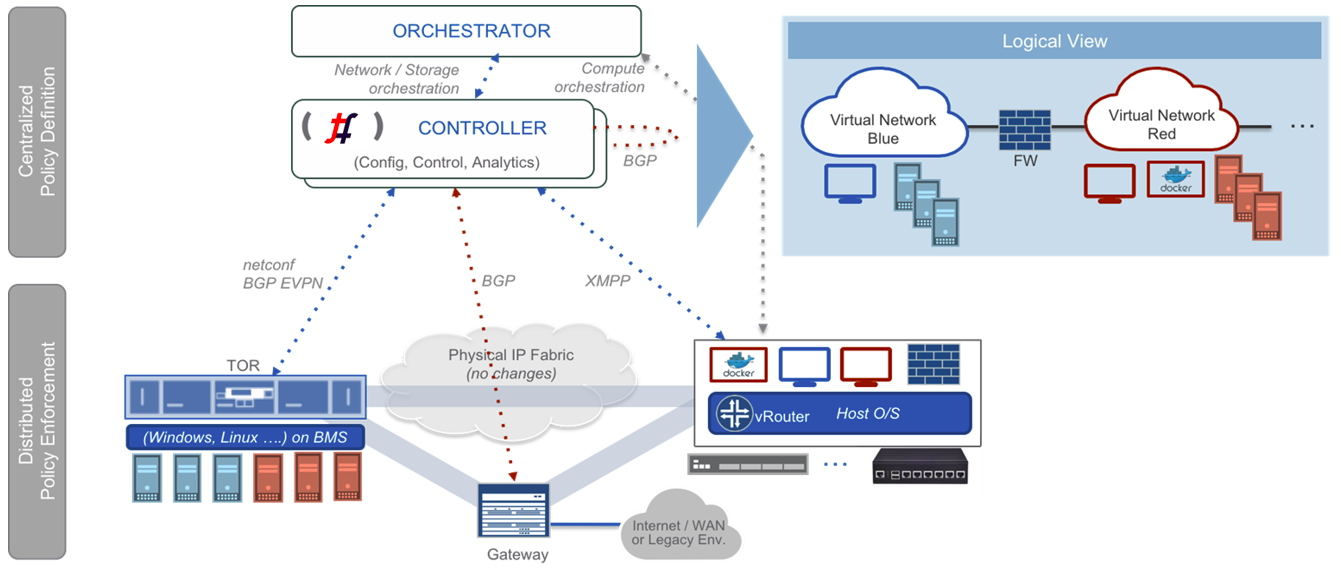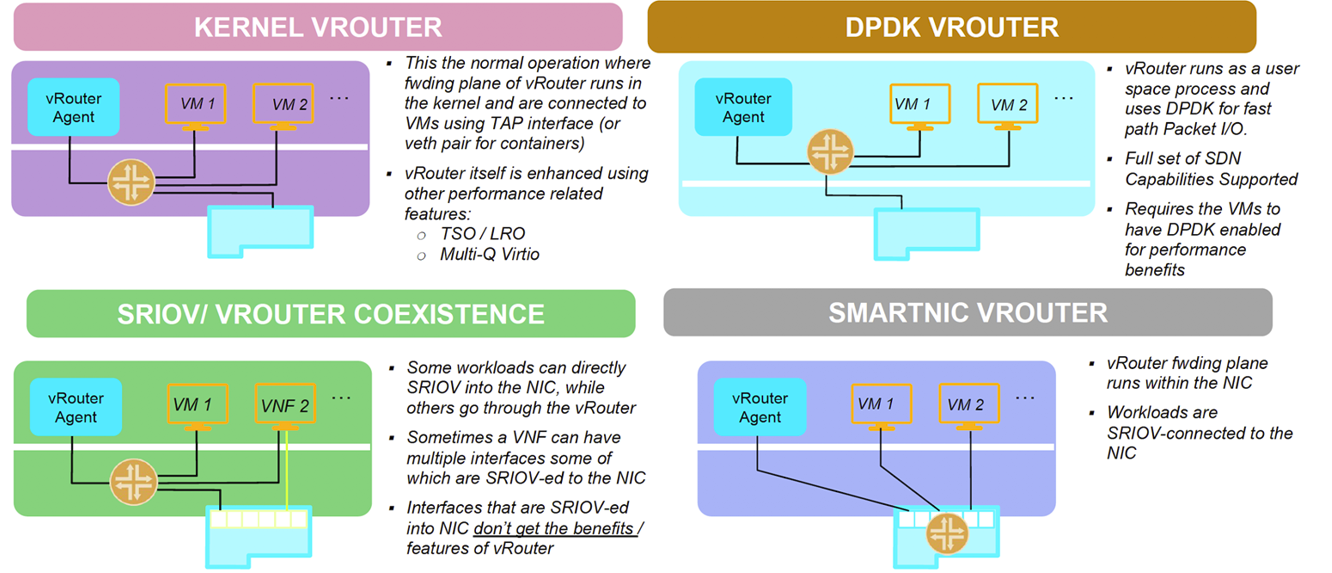...
Editor: Prabhjot Singh Sethi
Introduction:
Tungsten Fabric provides a highly scalable virtual networking platform that works with a variety of virtual machine and container orchestrators, integrating them with physical networking and compute infrastructure. It is designed to support multi-tenant networks in the largest environments while supporting multiple orchestrators simultaneously.
Tungsten Fabric enables usage of same controller and forwarding components for every deployment, providing a consistent interface for managing connectivity in all the environments it supports, and is able to provide seamless connectivity between workloads managed by different orchestrators, whether virtual machines or containers, and to destinations in external networks.
Architecture Overview:
Tungsten Fabric controller integrates with cloud management systems such as OpenStack or Kubernetes. Its function is to ensure that when a virtual machine (VM) or container is created, it is provided with network connectivity according to the network and security policies specified in the controller or orchestrator.
Tungsten Fabric consists of two primary pieces of software
- Tungsten Fabric Controller– a set of software services that maintains a model of networks and network policies, typically running on several servers for high availability
- Tungsten Fabric vRouter– installed in each host that runs workloads (virtual machines or containers), the vRouter performings packet forwarding and enforces network and security policies.
Technologies used:
Tungsten Fabric uses networking industry standards such as BGP EVPN control plane and VXLAN, MPLSoGRE and MPLSoUDP overlays to seamlessly connect workloads in different orchestrator domains. E.g. Virtual machines managed by VMware vCenter and containers managed by Kubernetes.
Tungsten Fabric supports four modes of datapath operation:
Tungsten Fabric connects virtual networks to physical networks:
- Using gateway routers with BGP peering
- Using ToR with OVSDB
- Using ToR managed with Netconf and BGP-EVPN peering
- Directly through datacenter underlay network (Provider networks)
Key Features:
Tungsten Fabric manages and implements virtual networking in cloud environments using OpenStack and Kubernetes orchestrators. Where it uses overlay networks between vRouters that run on each host. It is built on proven, standards-based networking technologies that today support the wide-area networks of the world’s major service providers, but repurposed to work with virtualized workloads and cloud automation in data centers that can range from large scale enterprise data centers to much smaller telco POPs. It provides many enhanced features over the native networking implementations of orchestrators, including:
- Highly scalable, multi-tenant networking
- Multi-tenant IP address management
- DHCP, ARP proxies to avoid flooding into networks
- Efficient edge replication for broadcast and multicast traffic
- Local, per-tenant DNS resolution
- Distributed firewall with access control lists
- Application-based security policies based on tags
- Distributed load balancing across hosts
- Network address translation (1:1 floating IPs and distributed SNAT)
- Service chaining with virtual network functions
- Dual stack IPv4 and IPv6
- BGP peering with gateway routers
- BGP as a Service (BGPaaS) for distribution of routes between privately managed customer networks and service provider networks
- Integration with VMware orchestration stack

